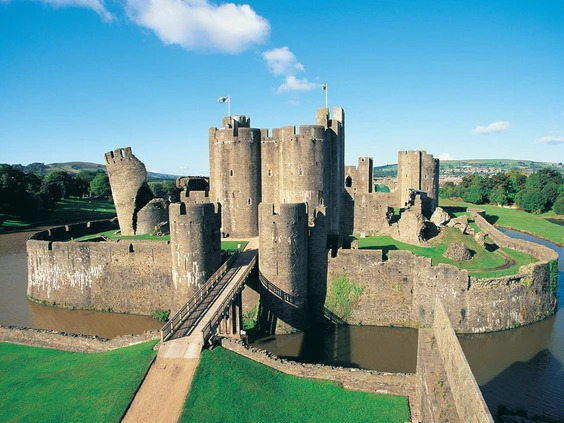
Question: In a fast-changing world of high-tech and geopolitical challenges, can you explain what having a “moat” means today? How can a small investor know if a company has a sustainable competitive advantage? — Cassandra
Answer: Sustainable value creation has two dimensions: the magnitude of returns in excess of the cost of capital, and how long these excess returns can be sustained by the company.
Like a farmer who use a winnowing basket to separate wheat from chaff, a successful investor must identify companies with the potential to generate Economic Value Added (EVA) over the long term. One way to do this is to focus on businesses with strong economic moats. It was value investor Warren Buffett who popularized the term ‘economic moat’ when he said, “A truly great business must have an enduring ‘moat’ that protects excellent returns on invested capital.”
Just as a castle’s moat defends against intruders, having a durable competitive advantage (moat) that gives a company strong pricing power makes it harder for challengers to steal market share away from it and harm profits.
As the late Charlie Munger said, “Over the long term, it’s hard for a stock to earn a much better return than the business which underlines it earns. If the business earns 6% on capital over 40 years, you’re not going to make much different than a 6% return – even if you originally bought it at a huge discount.”
Last year was a bumper crop for ‘moats’ as companies were dealing with the post-Covid effects of rising inflation and interest rates, and geopolitical tensions which gave way to supply chain issues and economic uncertainty. It’s no wonder use of the term “moat” spiked in company earnings calls reaching a historic peak as business leaders sought to reassure investors about the long-term strength and profitability of their firms.
But in a fast-moving world how can investors know whether a current market leader will become a laggard?
Companies can build a wide moat in at least five ways. Firms with wide moats often have several of these factors: High switching cost, intangible benefits, network effects, competitive pricing, and efficient scale.
High switching costs make it harder for customers to change service or product suppliers which benefits the incumbents. A good example is the software industry where the solutions are embedded into the client’s core business processes making it difficult and expensive to migrate to a different platform.
A Canadian example is Sylogist, a large holding within the Pender Small/Mid Cap Dividend Fund (PSMDF). Sylogist is a leading SaaS company with over 2,000 public sector customers including non-profits, K-12 education, and governments. The management team is committed to profitable growth with over 63% of its revenue recurring in nature consisting of SaaS subscription and maintenance and support. The fully integrated, mission critical software offered through the cloud make its customers sticky as represented by its gross customer retention ratio which, at around 95%, is much higher than its SaaS peers.
Intangible benefits could include such attributes as “brand love”. Certain brands engender customer loyalty and affection. Brands such as Apple and Hermes create covetable goods that have a strong cachet and engender a feeling of community among consumers that give their businesses a high level of immunity from competition. Other types of intangible assets include patents, copyrights, regulatory licences, and government tariffs. A Canadian example we added recently is Aritzia, a multi-channel fashion retailer with an innovative global platform offering everyday luxury products sold in aspirational environments with engaging service and captivating communications. Aritzia has a track record of profitable organic growth and free cash flow generation that underpins its financial foundations. Capitalizing on the availability of premier real estate, it is growing its boutique network across North America with a focus on the US.
Efficient scale works to the benefit of incumbents when it bestows upon them competitive advantages that will be difficult to overcome thus creating a virtual monopoly or duopoly. The high costs of launching into such an industry would lower returns below the cost of capital for new entrants. An incumbent enjoys geographic advantages that are hard or impossible to replicate. A Canadian example, and a holding within the portfolio, is FirstService Corporation, leader in essential outsourced property services in US and Canada. Its scale advantage, proprietary products/services and national coverage are competitive differentiators that are difficult to replicate. It has consistently earned a return on equity in the high double digits, which combined with its over 25-year track record of growing revenue at a CAGR of 19%, make it an attractive investment.
Network effects make a business more valuable the more people engaged with it. The classic example here is Meta, whose Facebook and Instagram divisions attract billions of users. Alphabet is another example; its Google search engine captures over 90% of global internet search market. These massive user bases attract lucrative advertising revenue and allow the businesses to raise prices. And they make it hard for new entrants to steal market share.
Competitive pricing is another way to create a moat. If a business is strong enough to negotiate with its suppliers to get cost reductions or can produce goods at a lower cost through efficiencies, it can undercut the competition, or benefit from higher profit margins. Either way is a win for the company. Some examples of strong pricing power are Costco and Walmart.
Profitable businesses and industries are bound to attract competitors. Companies with strong moats are better able to keep competitors at bay—at least long enough to adapt their business models to a new economic or technological reality. Looking for those quality companies with strong, wide moats is certainly a good place to start for investors seeking to build durable, all-weather portfolios and long-term wealth.



